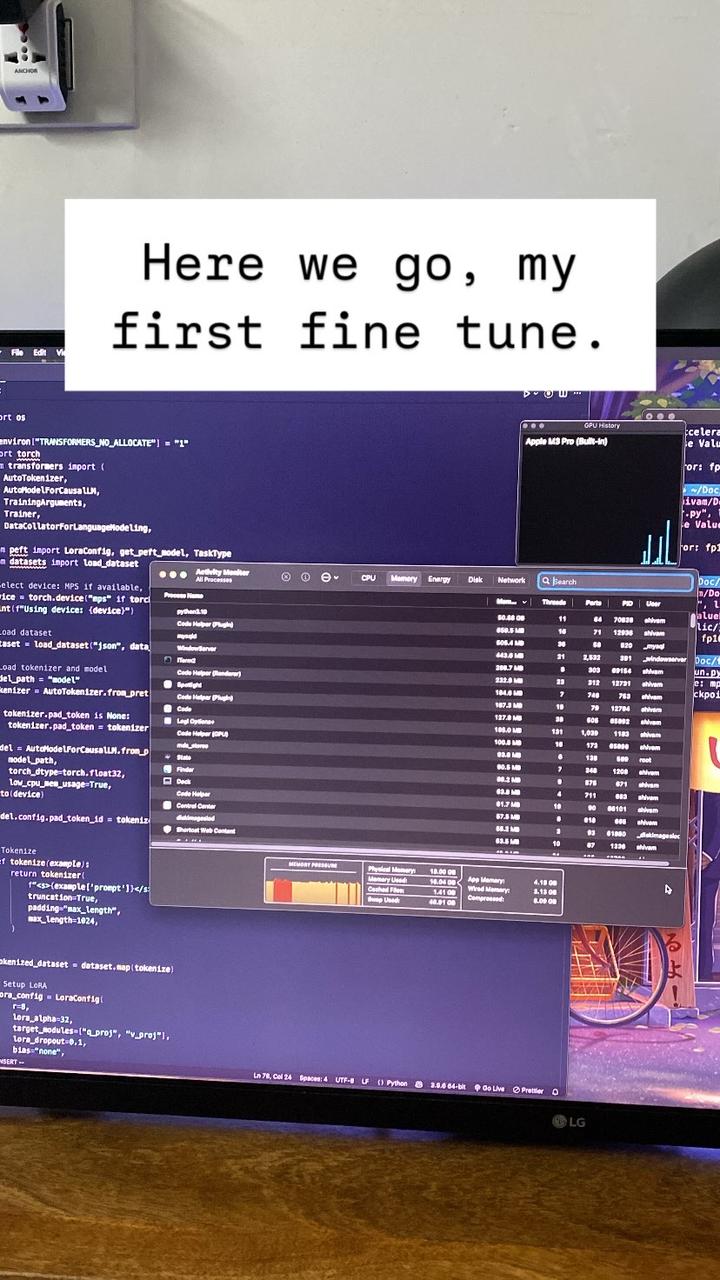It’s been a few days since I posted an update here. Not because I wasn’t learning - in fact, the opposite. I was working through a mix of things, from structuring my year-long learning roadmap to actually fine-tuning large language models for the first time.
Why I Wasn’t Posting Daily
Simple: I needed to zoom out a bit.
I took a couple of days to sketch out what I want to build in the next few months — not just random toy apps, but meaningful projects that actually challenge me to grow.
✅ I landed on 8 intermediate-to-advanced projects:
- A self-healing machine learning pipeline
- An AI-powered repository health tool
- A reinforcement learning–based warehouse management simulation
- …and a few others I’ll write about soon
I’ll be documenting each one - through blogs, and eventually, YouTube videos.
What I Did During These Days
🔧 Go Language Progress
I revisited structs, especially:
- Embedded structs
- Package exports
- How nested structs behave and how Go handles memory when things get passed around
Nothing too flashy — just getting the reps in.
⚙️ MLOps with MLflow
- Got my first few experiments tracked in MLflow
- Learned how easy it is to get started… and how quickly it can get messy if you don’t think about structure upfront
This was just the start - but it gave me confidence to go deeper. Plus also my classes start soon, so I need to be ready.
🧠 Deep Learning Math Refresher
Even though I’ve been through this before, I wanted to revisit the fundamentals:
- Matrix multiplication
- Logarithms & entropy
- Cross-entropy, min/max, argmin/argmax
- Mean, variance, and a bit of spectral math
It’s amazing how much easier this feels the second time around.
🔁 Fine-Tuning Language Models (The Real Work)

This was the biggest chunk.
I fine-tuned three different models:
- 🐍 Code LLaMA 13B
- 🌊 Mistral 7B
- 🇨🇳 Qwen 2.5
All using LoRA adapters. Some on Google Colab (for GPU), some locally on my MacBook via MLX. The goal was to fine-tune for long-form generation, but… let’s just say I have a lot of learnings.
Key Takeaways:
- Preparing the dataset took more time than training.
- Writing the actual training script? Almost boringly simple.
- Results weren’t great - and that’s good, because now I know why:
- Wrong model for the job (don’t fine-tune a general base model for structured output)
- Prompting might’ve been a better route in some cases
- Fine-tuning ≠ magic - model alignment matters more than you’d think
🧪 Bonus Lesson: It’s Not Just About the Model — It’s About the Fit
One thing became very clear while fine-tuning these models: the fit between your goal and your model matters more than anything else.
At first, I was trying to get long-form, structured outputs using models that were never really trained for that. The results? Pretty underwhelming.
What made a real difference was this realization — if your model isn’t aligned to your use case, no amount of prompting, training, or tweaking will get you good results.
I now spend more time upfront asking: Is this even the right model to fine-tune for this task? And in most cases, the answer tells me what I need to fix not the code, not the GPU setup, but the alignment itself.
What’s Next?
Now that I’ve got my 8 projects lined up, the next few weeks will be more focused:
- Deep Learning → FFNs, Autoencoders, etc.
- Go → Interfaces and modular structure
- MLOps → More MLflow, maybe some Docker and Airflow after that
- Fine-tuning → Better experiments with task-aligned models
More importantly, I’ll be documenting everything as I go.